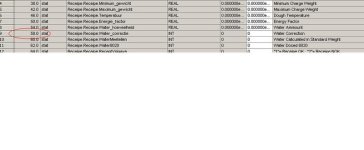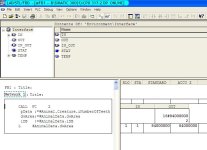Hello folks,
Had a question about S7
I the declaration of a FB i add a UDT
The UDT excist out of a struct
The struct has different variables in it
Now i want to know the adress area of this variables.
Assume that UDT name is A Struct name is B and variable is C then i can load this value by typing
L A.B.C
Normally when i want to know the adressarea i would type
L P##A.B.C
But this doesn't seem to work, someone out there who can help me out with this?
Thx
Had a question about S7
I the declaration of a FB i add a UDT
The UDT excist out of a struct
The struct has different variables in it
Now i want to know the adress area of this variables.
Assume that UDT name is A Struct name is B and variable is C then i can load this value by typing
L A.B.C
Normally when i want to know the adressarea i would type
L P##A.B.C
But this doesn't seem to work, someone out there who can help me out with this?
Thx







